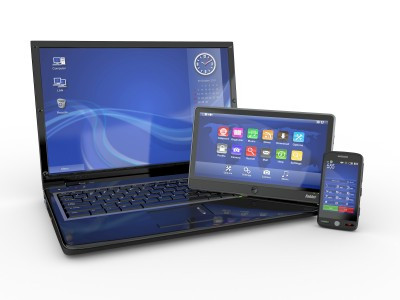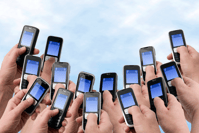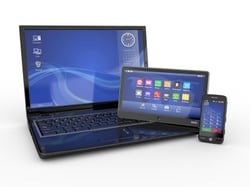
MRMW 2013 Highlights
MRMW 2013 Highlights
30 July 2013
This past July 2013 I had the pleasure of attending and speaking at the North American Market Research in a Mobile World Conference, held in Minneapolis, USA. It was a full house, with reps from nearly 250 MR, Marketing and Technology companies in attendance. The conference was a mix of keynotes with an eye to new ways to the future of mobile in general, a clarion call that mobile is now, not the future, and some exciting ways to use mobile that go way beyond simply transferring computer based online survey to smaller screens. You can watch our presentation (highlighting the gains that can be made in response rates by tailoring recruitment, incentives, and survey lengths to an increasingly mobile consumer) here:
All research is mobile research, even if you didn't intend it that way.
This point cannot be emphasized enough. If you are doing research online or on the telephone, the odds are very good that you are doing "accidental" mobile research. A study by the National Institutes of Health (USA) indicates that 38% of households do not have a landline telephone. Our own recent research projects shows that between 10-20% of web survey completions are on some form of smaller screen device (tablet or smartphone). Looking at traditional web surveys, the following should be taken into consideration:
1. Survey Content & Design: Think about the length and format of your studies, and work hard to eliminate anything that would be difficult to do on a mobile device. Consider length carefully, taking surveys on a smaller screen can add 25% to the length of a survey. Whatever platform or research supplier you are using, you should know what they do with technology to make the survey friendly for all screens and all OS's.
2. Response/Completion Rate: No longer can you count on participants (using the example of email recruited surveys) receiving your invite while at home or office. They receive email in these places, but also on the go, and will likely make a decision at that time (and on that screen) to participate in research or not. A survey that is too long or not friendl
y could result in lower response rates. If you have a complex task that is best taken on a large screen, with a longer attention time, you should specify this up front.
4. Data Quality: Although his has probably been true for online research for a long time, mobile survey completion means that participants are more likely to be distracted; perhaps completing research with stolen moments of free time, or on one screen while multi tasking on another. The onus returns to researchers to make research short and engaging.
5. Ethics & Compensation: Mobile research now comes with a cost to participants (for example the cost of online data to take the survey). As well, participants view their mobile devices, and their smartphones in particular, as their private and personal devices, and feel like their participation should be part of a fair exchange of value.
Small Screen Doesn't Mean Mobile Screen
Sharon Knitter provided an insight that seems obvious when stated, but has implications for research. Nearly ⅔ of the time that people use a "mobile" device, they are actually at home, not mobile at all, and may be 'multi-screening" As she noted, it is important to think of mobile devices as small screen devices. Portable yes, capable of travel, yes - but often simply a more handy screen size for many of the activities we do. See this article from Tech Crunch for more details.
Mobile suffers from one other issue - defining the term. Mobile devices today mean both smartphones and tablets, but as Michael Mace noted, it's kind of like saying "car". More devices (from Wii to wearable) are coming everyday, and each will create a different user experience. For researchers, this presents a challenge to the tech folks in the room - do you use mobile browser or app? How do you stay ahead of the myriad of experiences users will have on different devices?
Ethical Challenges Abound
Day one of the conference (Tuesday) was a pre-conference workshop, with about 60 reps in attendance. One of the burning issues throughout the day was a discussion about the power and the burden that exists regarding the new kinds of data that are being generated from mobile research. For example, any audio or video clip that is submitted as part of research should be de-identified (both facial and by removing the geo and time stamping tags that are automatically created). This lead to discussions about the multitudes of passive data and PII (Personally Identifying Information) that a mobile app survey could download from a mobile device - location tracking, mobile browsing history etc..
ESOMAR and MMRA have been working together to develop guidelines to help MR companies tread carefully through these issues, and they are worth a read.
The future is now…and it's different, if you let it be
Portable small screen devices can lead to brand new ways of interacting with research participants. Jeanine Bassett and Andy Dybvig of General Mills provided some really concrete ways that they have re-imagined their research questions in the light of a mobile first research strategy. Throughout the conference, it was interesting to see that CPG companies seem to have been first to embrace "in the moment" research to replace traditional recall based work. For example, asking participants to document events (e.g., taking images, video, or audio to document a shopping trip) or to replace artificial store shelf experiments with surveys taken on mobile directly at the participant's grocer, providing a more realistic context for the research.
A technique that has been discussed for a few years is geo fencing, triggering a survey response by geographic location. To date, this tech is highly dependant on respondents opting in to participate, and so is limited to smaller volume panel studies. The consensus in the room was that un-solicited geo-fencing (perhaps triggering a survey via a shopping or coupon app) would cross the line in terms of intrusiveness, at this time.
The researchers and technologists in the room were challenged to work together - to find ways to use the great technology being developed (e.g., Placed) with the research skills and creativity needed to successfully design and create rigorous and valid research.
Conclusion
Many MR veterans in the room recalled many of the same creativity happening as (not so long ago!) online research was being developed as an alternative to paper and telephone surveys. While that was a move to faster and less expensive research, the move to mobile/small screen is actually an attempt to catch up to what people in the world are doing naturally. The more we can interact with people in a natural way, with less intrusion, the more interesting and insightful feedback they will give us into their lives, and the products and services that they use.
Advanis is working hard to make sure that all surveys we do (online and CATI) are mindful of mobile devices. To learn more, go to /mobile-data-collection or connect via social media.
 Lori Reiser is a Principal Consultant at Advanis. Her consulting engagements focus on ensuring that the consumer is heard at the strategic table - reducing risk in marketing decision making. Lori can be reached by calling 888-944-9212, via e-mail, or on twitter @LoriReiser.
Lori Reiser is a Principal Consultant at Advanis. Her consulting engagements focus on ensuring that the consumer is heard at the strategic table - reducing risk in marketing decision making. Lori can be reached by calling 888-944-9212, via e-mail, or on twitter @LoriReiser.
Search / Recherche
Subscribe to our blog
Get our insights blog updates right to your mailbox once per month. No spam, we promise! Your email address is always safe.
Popular Tags
- ABpoll (1)
- Academics (1)
- Accessibility (3)
- Advertising (1)
- Analytics (8)
- API (1)
- Automation (2)
- Awareness (1)
- BC Food (1)
- Best Practices (9)
- BOS (1)
- Canada (11)
- Cannabis (2)
- Carbon Tax (1)
- Case Study (5)
- CATI (14)
- Choice (8)
- College (1)
- Communications (1)
- Concept Testing (2)
- Conference (5)
- Cordcutting (1)
- Covid-19 (2)
- CSAT (1)
- Customer Experience (12)
- Customer Journey (2)
- Dashboards (1)
- Data Science (2)
- Digital (1)
- Digital Adoption (1)
- DIY Research (2)
- Education (1)
- Email Marketing (1)
- Enviroment (1)
- Expectations (1)
- Finance (1)
- Foresight (2)
- Freelance (1)
- Future of Work (1)
- Gig Economy (1)
- Health (3)
- Human Experience (1)
- HX (1)
- Incentives (8)
- Innovation (6)
- Insights (26)
- Insurance (1)
- ISO (1)
- IVR (11)
- Learning (10)
- Longitudinal (1)
- Low Incidence Populations (2)
- Margin of Error (1)
- Market Research (35)
- Marketing (1)
- Marketing Primer (1)
- Millennial (8)
- Millennials (1)
- Mobile (17)
- MRX (21)
- newMR (1)
- NIS (1)
- NPS (10)
- Online Survey (9)
- Optimization (1)
- Persona (2)
- PMOT (1)
- Police Services (2)
- Pricing (3)
- Project Management (1)
- Public Policy (3)
- Qualitative (11)
- Quant (2)
- Quantitative (14)
- Research (4)
- Response rates (4)
- Responsive (8)
- Sampling (5)
- Security (1)
- Segmentation (2)
- Social Research (6)
- Strategy (1)
- Success (4)
- Survey (10)
- Surveying (3)
- Tips and Tricks (3)
- Trends (12)
- University (1)
- USA (1)
- UX (1)
- Virtual (1)
- WCAG (1)
- Webinar (1)


